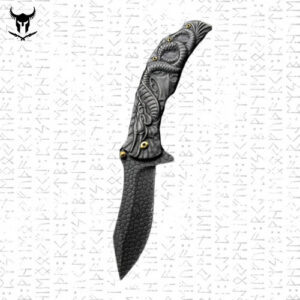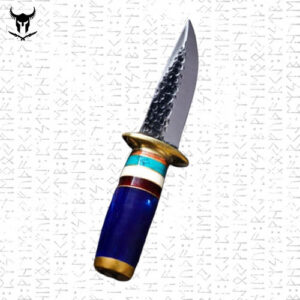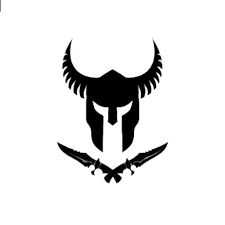The word “Seax” itself is an Old English translation of the modern word for “knife.” In the Middle Ages, it was a catch-all term for any bladed weapon, and many different designs fell under this name. In the modern context, this word is used to describe a particular design of knives, swords, and daggers that were traditional to the Germanic tribes during the Migration Period and the Middle Ages.
Summary
ToggleThe Seax was a single-edged knife that was a traditional design in Viking Age Scandinavia and was also commonly used by many other Germanic peoples. Numerous Viking historical sites have unearthed blades of various sizes and lengths. During the Viking era, the Seax was usually carried in a side sheath with the blade facing upwards, allowing for easy access. This would have been an ideal secondary or tertiary weapon for close combat. Besides being a weapon of war and an essential hand tool, the Seax was also a crucial everyday tool in Viking Age life.

Boreal Forest Knife - Wooden Handle Paired with the Lightness of a Feather
⚒️ A blade, a legacy — forge yours now.
Buy nowViking Sword Research: A New Perspective
New research scrutinizes three Viking swords and finds that, although well-made, they were not strong enough to withstand combat. Vikings, the feared raiders who terrorized Northern Europe for three centuries in the Middle Ages, were known for their formidable presence. However, were their swords merely for show? Much of the media coverage surrounding a high-tech study of three Viking swords by Danish researchers suggests this impression. The swords, while well-crafted, were not sturdy enough to endure combat.
Viking Swords: Fact vs. Fiction
The Vikings were the seafaring parts of Scandinavian societies based in Scandinavia. These violent raiders had a significant impact on all those they encountered, resulting in many written records and other archaeological documents describing Norse culture and Viking raids. Many of these writings specifically describe the swords used in battles and sword fights, not just as ceremonial accessories. Records from Ireland, a frequent site of Viking raids, describe how the Irish saw Viking swords as superior to their own.

Jörmungandr Hunting Knife with Midgard Serpent Pattern
⚒️ A blade, a legacy — forge yours now.
Buy nowThe Vikings were not limited to local industry. They procured swords from the Frankish Empire. Early Viking swords were made of pure iron and were known to bend in battle. Later, Viking swords, produced or purchased locally, were made by pattern welding, a sophisticated technique in which many thin strips of metal are interwoven at high heat to create a stronger blade. The trick to creating an ideal sword using this technique is to distribute different types of metal that balance hardness and flexibility—durable enough to hold an edge while absorbing the shock of contact. The scanned swords were not made in a way that allowed them to both cut and flex.
However, it is difficult to draw conclusions about manufacturing based solely on metal. A true understanding of the underlying chemistry of steel did not develop until the 18th century. Without this knowledge, the iron ore available to a particular blacksmith and the skill of that blacksmith had a significant impact on the blades produced.

Survival Viking Knife | High Hardness Portable Puukko
⚒️ A blade, a legacy — forge yours now.
Buy nowSourcing and Quality of Viking Swords
Scandinavians were not limited to local industry. By nature, Norse chiefs were happy to sell quality products and use them during raids. The Vikings procured swords from the Frankish Empire, a tribal collective centered in Germany and northern France renowned for its steelwork.
Danish researchers concluded that the newly scanned swords were primarily for status and were clear that they were only speaking about these particular swords. Comments suggest that cheaper weapons were preferred for battle. The swords in the study come from elite burials, not battlefields. Some ornate blades were clearly decorative, but records indicate that functional blades must have also been available. As Irish defenders learned to their cost, Viking swords did not need to be perfect, just better than those of the opposition.
